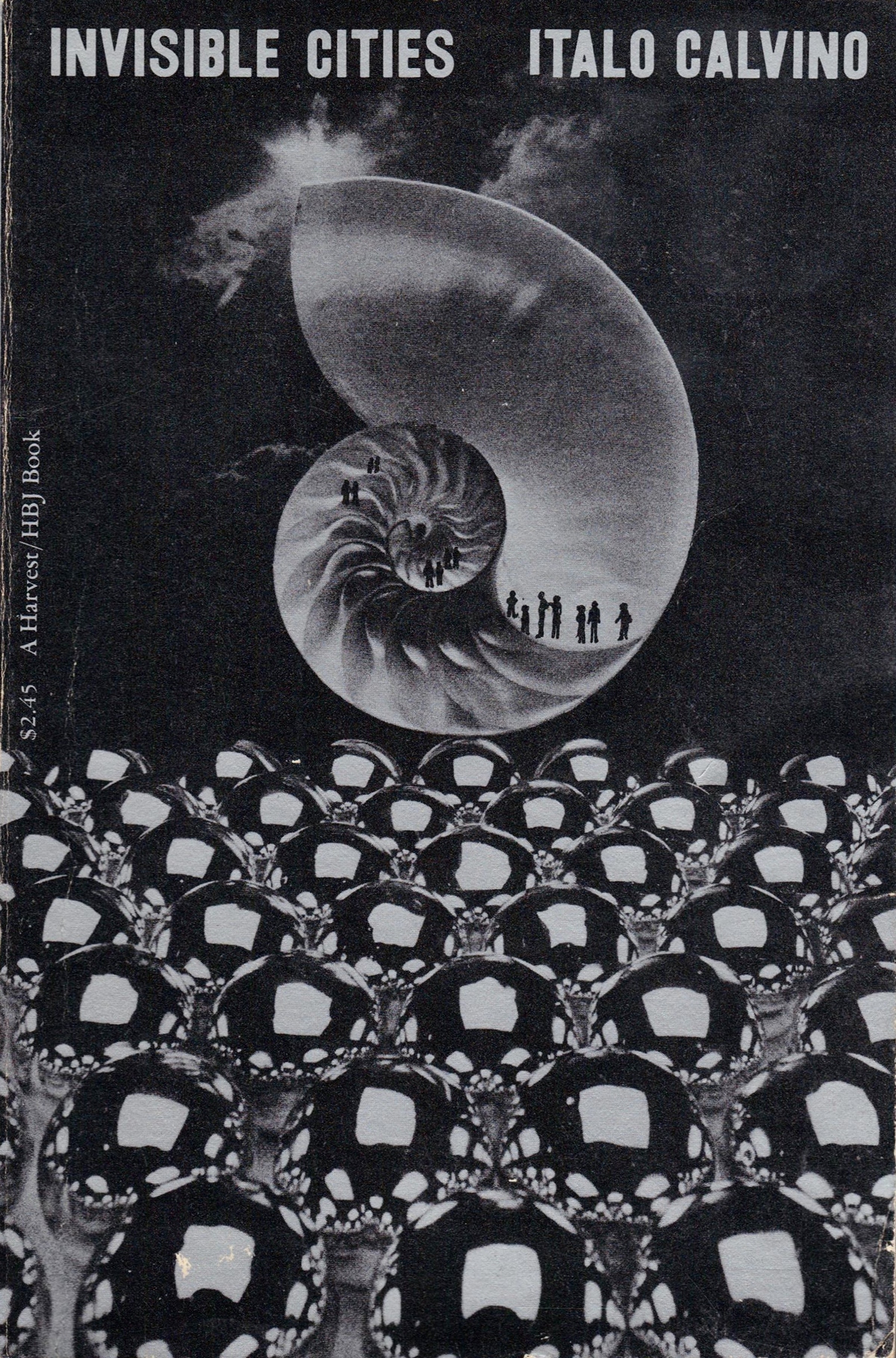


It seems at first glance that this might be Fraser’s avowed subject: the aged and delicate detritus or exotica that languishes out of sight in museum precincts of which he affords us only the vaguest peripheral glimpses.īut look again and a second thought intrudes: that these relics, models and more or less old fashioned artefacts are also portals of a sort onto other times and places, that the things in this imaginary city are themselves images of other milieux, even of other cities or settlements – still further, of other civilizations. Note the several instances of miniature tableaux and theatres, amateur artworks and at least one slightly decayed scientific model, picturing in stiff wire and tiny spheres the structure of penicillin. A house of ancient playing cards built atop a pile of crumbling leather-bound books.


Italo calvino invisible cities excerpt full#
This second volume – it looks very small, but that may be just an effect of the shallow depth of field – that shows a figure in full armour and on the opposite page the individual portions of his metallic garb. Or the curious fetish-like figure with a long wire-encircled neck and the face of a child’s doll. Consider this vellum-bound book with its embossed gold borders and initials – ‘EG’, as if to advertise its status as example – its cover image of a rampant hound (or is it a lion?) and exquisite black ribbons tied neatly on the left, bound, side. We might venture at first that the fiction, if it is a fiction, concerns a city of the past, or a city obsessed with its obscure heritage: a place that seems to have curated and conserved the most unlikely remnants of its own history. Such wondrous metropolises as the grey stone edifice of Fedora: in its centre stands a metal building with a crystal globe in every room, in the depths of which orb one sees ‘a blue city, the model of a different Fedora.’ In time, it becomes clear to Kublai, as to the reader, that these are all one city, a city of the imagination that is being built out of words, and the vistas they conjure, by the emperor and the explorer – a collaborative city, a city of more than one mind.Ī fantasized city, then? More exactly a London of the mind, existing in fictive parallel to the one we know Fraser himself has prowled in search of these saturated, luminous and sometimes frankly enigmatic images? Perhaps.
Italo calvino invisible cities excerpt series#
Here, in a series of ludic portraits of the fantastical places to which Marco Polo has travelled, and italicized interludes where he converses with the Tartar emperor Kublai Khan, we discover such towns as Diomira, ‘a city with sixty silver domes, bronze statues of all the gods, streets paved with lead, a crystal theatre, a golden cock that crows each morning on a tower.’ Such cities as Zirma, where the skies are filled with dirigibles. If this is a city, as the title of Peter Fraser’s new series of photographs tells us, what kind of city might it be? One answer comes from the artist himself, who points in terms of inspiring analogues to Italo Calvino’s novel (of sorts) from 1972, Invisible Cities. Polo’s descriptions of his travels are not chronological but thematic, as he classifies them under headings such as “Cities and Memory” or “Cities and Death.” At a 1983 Columbia University conference, Calvino said that Invisible Cities was “made as a polyhedron, and it has conclusions everywhere, written along all of its edges” (Elpis).‘I aspire to the object, to the blessing of matter and opacity.’ While the journeys are all told in the present tense, they encompass time-travel that incorporates classical Greek and Roman deities in addition to the construction of modern metropolises like Los Angeles and New York. Polo describes the waste that accompanies consumerism, travelers’ fatigue, and the homogenization of the landscape. As the account of cities progresses, dystopian motifs emerge. These features include duality-for example, one city for the living and another for the dead-and paradox, in the sense that the cities’ greatest virtues are also the origin of their decline. Although each city has a different female name, as his narrative progresses the reader comes to realize that they share features in common. The second narrative strand is Polo’s descriptions of the 55 cities he has visited.


 0 kommentar(er)
0 kommentar(er)
